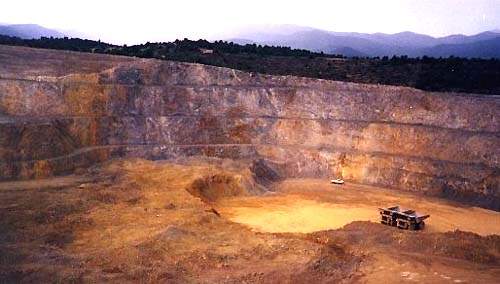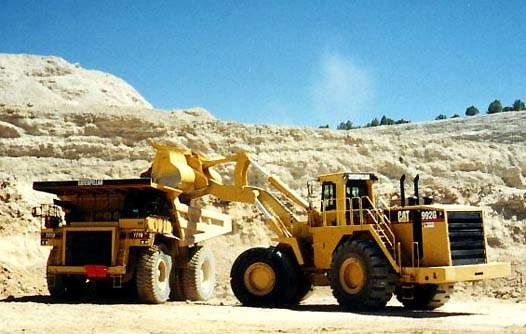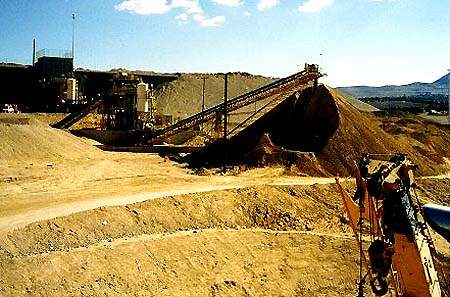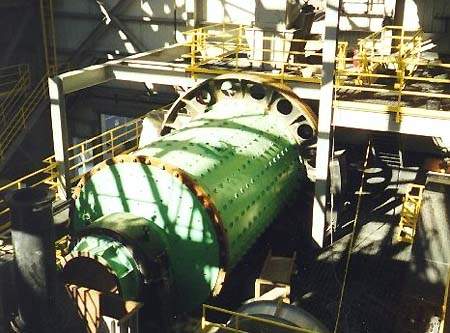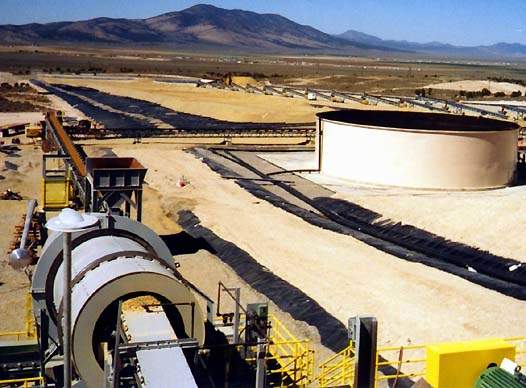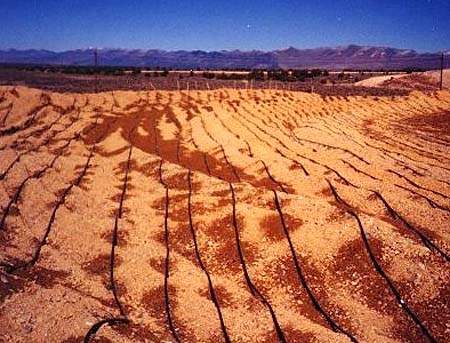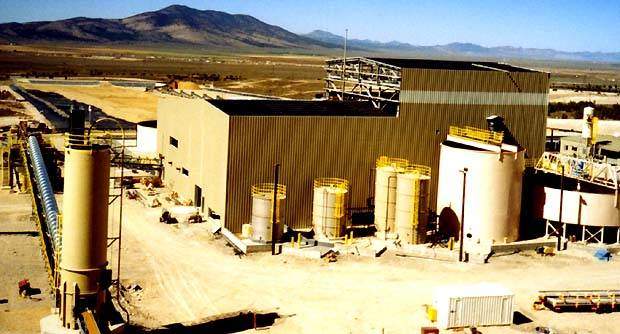Ruby Hill is an open-pit gold mine and ore processing facility, located 2km north-west of Eureka and 386km east of Reno, Nevada. Formerly wholly owned by Homestake Mining, the property passed to Barrick Gold Corp. when the two companies merged in 2001. In 2001, it produced 134,747oz of gold, but was closed during 2002 following the exhaustion of mineable reserves.
Operations at the mine restarted in 2003 following an investment of $75m, including $30m in mining equipment and processing upgrades. The decision to reopen and explore the East
Archimedes gold ore body, found below the original open pit towards the east, was taken the same year The mine poured its first gold in 2007. In 2008, the mine produced 98,000oz of gold.
GEOLOGY AND RESERVES
The West Archimedes orebody consists of gold-bearing brecciated jasperoid and decalcified limestone overlain by a layer of cemented alluvium and gravel from 15m to 122m thick. As of 31 December, 2008 , the mine held 831,000oz of proven and probable mineral reserves/gold.
OPEN-PIT MINING
The open pit was mined before closure using Caterpillar 777D 91t-capacity haul trucks and a Cat 992G wheel loader. The overall stripping ratio was estimated at 7.2:1.
ORE PROCESSING
Ore explored from the mine is processed on-site by zero-discharge heap leach and carbon column facilities. Before the mine was closed in 2002, high grade ore was processed in a conventional mill and leach plant. Low grade ore was heap leached.
The recovery plant had a design capacity of 3,175t/d, comprised of 2,358t of low-grade ore crushed in two stages to –19mm and 816t of high-grade ore crushed in three stages to –13mm for milling.
A variable speed apron feeder pulls run-of-mine ore from a dump hopper to a vibrating grizzly. Oversize is fed to a primary jaw crusher. Grizzly undersize and jaw crusher product are combined and fed to open circuit secondary screening and crushing. Secondary screen oversize is fed to a Nordberg 1560 Omnicone standard head crusher while undersize and secondary crusher product are transferred stockpiles. Tertiary screening and crushing is operated in closed circuit with high-grade ore fed to a double-deck screen. Screen oversize is fed to a Nordberg 1560 Omnicone shorthead crusher. The tertiary crusher product returns to the stockpile for re-screening, while screen undersize is transferred to a 1,360t fine ore silo.
Crushed fine ore is ground in a ball mill in closed circuit with a hydrocyclone. Cyclone overflow is thickened to 55% solids and leached in a single, air sparged, mechanically agitated leach tank. Leached slurry is filtered to produce filter cake of less than 25% moisture and a high-grade gold solution for carbon adsorption. Grinding in cyanide, using recycled, heap-leach barren solution and cement for pH control, results in approximately 60% dissolution of gold values reporting to thickener overflow. Gold dissolved in the leach tank is separated and washed from the filter cake during filtration. Thickener overflow and belt filter filtrate and wash solutions are combined at around 2.4g/t Au to feed the first carbon adsorption column.
Low-grade ore and belt filter cake are combined with cement and barren solution to produce agglomerates at 12% moisture for heap leaching. The projected heap-leach extraction rate is 80% after 30 days.
GOLD RECOVERY
Seven carbon adsorption columns are arranged in series. Thickener overflow and belt filtration solutions are combined to feed the first column. Heap-leach pregnant solution is combined with outflow from the first column to feed the remainder of the adsorption circuit. Loaded carbon is transferred to a nitric acid wash column for washing and neutralisation prior to pressure stripping.
Loaded eluate from pressure stripping reports to two electrowinning cells. Metals deposited on stainless steel mesh cathodes are water-flushed to a wash box and filtered in a plate and frame filter press prior to retorting. Mercury contained in the ore and reporting to solution during cyanidation is recovered in a mercury scrubber, or from the retort condenser. Retorted precious metal sludge is refined in an electric induction furnace producing doré bullion. The plant has an overall gold recovery rate of 86%.
ENVIRONMENT
In September 1999, Ruby Hill received a Nevada Excellence in Mine Reclamation Award, granted jointly by various state and federal mining and environmental bodies.

